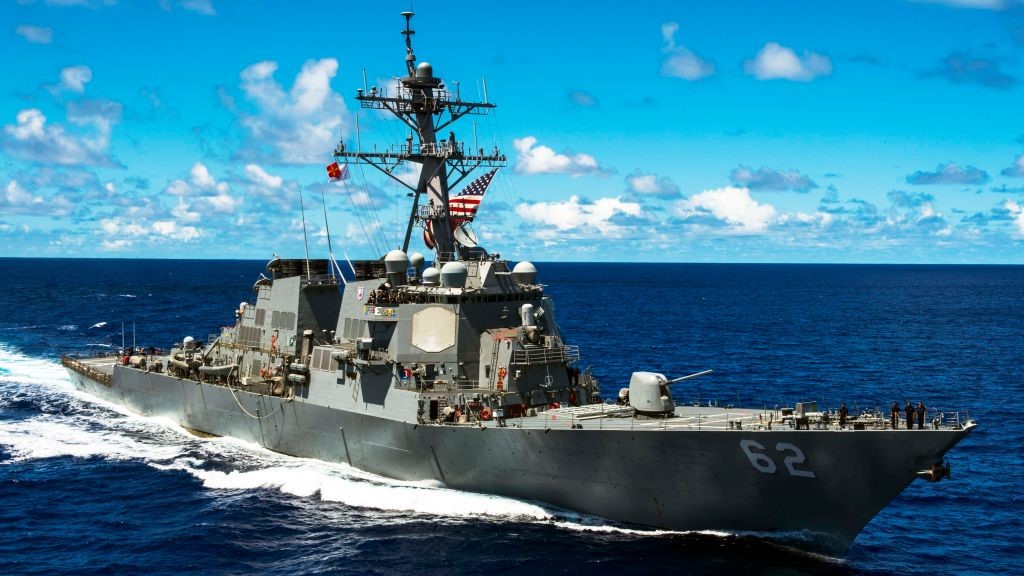Although the United States has long been a nuclear-limited country and advocate, the new version of the “National Defense Strategy” released by the US Department of Defense on the 27th has relaxed restrictions on the use of nuclear weapons.
“By the 2030s, for the first time in history, the United States will face two major nuclear powers as strategic competitors and potential adversaries,” the new version of the strategy document said. In response, the United States will “maintain a very high threshold for the use of nuclear weapons,” but does not rule out the use of these weapons against non-nuclear strategic threats to U.S. forces at home, overseas, or allies.
This suggests that the United States will use nuclear weapons first when a broad range of non-nuclear capabilities developed and deployed by U.S. competitors cause strategic-level damage to the United States. That is, the United States will respond to nuclear and non-nuclear attacks with nuclear weapons.
Prior to this, the United States adhered to the principle of “no first use” of nuclear weapons and considered using nuclear weapons to defend its own or its allies and partners’ important interests only in extreme situations of being threatened or attacked by nuclear weapons, and did not use or use nuclear weapons against non-nuclear weapon states. Threats to use nuclear weapons.
Current nuclear threats include mainly hypersonic weapons possessed by Russia and China, against which the United States has yet to prove defensive.
But the strategy document did not reveal specific “non-nuclear threats” that would lead to a nuclear response by the United States.
The report also listed China as the number one threat to the United States.
While Russia has waged war in Ukraine, Russia is only a near-immediate threat, while China is the biggest, long-term security challenge, the report said; China’s increasingly provocative rhetoric and coercive actions against Taiwan are “destabilizing, misguided” The US military will purchase equipment and adjust future plans accordingly.
And in the 2018 U.S. National Defense Strategy, China and Russia are on the list of threats to the United States.
Chinese Foreign Ministry spokesman Wang Wenbin responded on the 28th: China is seriously concerned about this and firmly opposes it. He said that China has the ability and confidence to safeguard its national security interests and will not be intimidated by the US nuclear blackmail.
China hopes to have at least 1,000 operational nuclear warheads by the end of the decade, which could be used for “coercive purposes, including military provocation against U.S. allies and partners in the region,” according to the new strategy document.
According to a report by the Voice of America on the 27th, the CCP is actively and rapidly developing hypersonic missiles. Last summer, a nuclear-capable hypersonic missile test-fired by the Chinese Communist Party flew around the world in low-Earth orbit before re-entering the atmosphere to reach its intended target before hitting its intended target. This increases the difficulty of its discovery.
The United States only successfully implemented a joint hypersonic flight test on October 26. The US military said it is expected to deploy the first hypersonic weapon system in this fiscal year.
U.S. lawmakers raise clear strategy
Richard Haass, chairman of the Council on Foreign Relations of the United States, said at the International Symposium on “China’s Power Changes and Governance Trends” on the 28th that the CCP’s past unilateral actions, including large-scale military exercises against Taiwan, should be expressed by the United States as “unacceptable.” ” This is “strategic clarity”, but it does not involve the one-China policy, it expresses intolerance to unilaterally using force to change the status quo, and does not want Taiwan to take unilateral provocative actions.
Haas believes that in Xi’s third term, if economic development is hampered, he will focus on Taiwan to determine his place in history. He doesn’t know if the CCP has a timetable for invading Taiwan by force, but said the CCP appears to be increasingly impatient.
According to a report by the Central News Agency on the 28th, the US Republican Josh Hawley announced on the 20th that he would propose the “Sanction Xi Jinping for Xinjiang Atrocities Act” (Sanction Xi Jinping for Xinjiang Atrocities Act), the bill identifies Xi Jinping as an accomplice of the Xinjiang genocide. He and other CCP officials should be held accountable, including sanctions, for this.
On the 24th, Hawley’s office received a letter from Li Xiang, the signed counselor of the Chinese embassy in the United States, expressing China’s “strong indignation and serious concern” about the bill.
Li Xiang accused Hawley in the letter, saying that he tried to interfere in China’s internal affairs, smear the leaders of the CCP, sow discord between the party and the people, and even dared to point to the top leadership of China (CCP), claiming to sanction the top leaders of China (CCP). “This is clearly against 96 million party members and 1.4 billion Chinese,” demanding Hawley stop advancing the bill.
Facing Li Xiang’s “struggle” remarks, Hawley mocked Beijing’s “sensitive” on Twitter today, saying, “Beijing has lost its mind, calling Uyghurs terrorists and asking me to withdraw the bill, which is impossible.”
